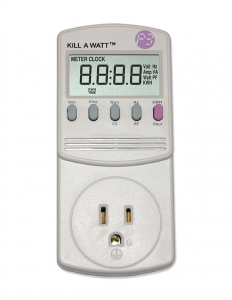New year, new resolutions. Resolve to save energy and money at home. Check out these eight things all homeowners should do to cost effectively lower their energy bills.
 Install and set a programmable thermostat and save an estimated 10 percent a year on heating and cooling costs.
Install and set a programmable thermostat and save an estimated 10 percent a year on heating and cooling costs.
Use sunlight to your advantage. Choose window treatments that allow you to use natural light while reducing heat loss and gain.
Switch to ENERGY STAR® appliances, fans and electronics. Using ENERGY STAR certified products throughout your home could save nearly $900 over the lifetime of the products. Check out rebates available from Dakota Electric
Choose energy-saving lighting. Replacing 15 traditional bulbs with energy-saving LEDs will save you $50 a year and more than $600 in energy costs over the life of the bulbs. Dakota Electric offers a rebate of up to $2/bulb
Use an electronic power strip for your electronic equipment. Help reduce phantom loads — and save up to $100 a year — by plugging electronic devices into a power strip and turning it off when not in use.
Hire a professional to maintain your heating and cooling system. Check and replace your air filters regularly and arrange for annual maintenance with a qualified technician.
Reduce energy for water heating. Take simple steps — like lowering your water heater’s temperature and installing low-flow showerheads — to reduce your water heating bills.
Consult the Energy Experts® at Dakota Electric for advice on saving energy. They can answer your questions, offer tips and suggestions and, in some instances, provide a free home energy audit. Call 651-463-6243.
How much energy are you really using?
Now that the holidays are behind us, are you curious to know how much energy your new appliances and electronics may be using? There’s an easy way to find out! Dakota Electric provides 27 Kill A Watt™ meters through Dakota County’s library system. Members may check out a meter to measure power consumption of appliances and electronics to determine the actual cost of power consumed. Simply follow the instructions and plug the meter into a regular 120-volt outlet and plug an appliance into the meter. The unit will project the cost of continued use of an appliance in time periods of hour, day, week, month and year.


